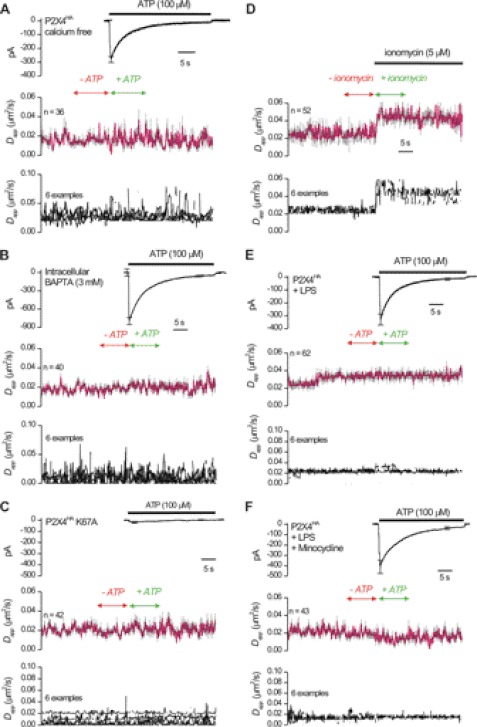FIGURE 7.
ATP-evoked increases in P2X4HA receptor mobility are triggered by global elevations in intracellular calcium and abolished in activated microglia. A, as in Fig. 6C but for cells bathed in calcium-free extracellular buffers. B, as in A but for cells dialyzed with 3 mm BAPTA via the patch-pipette. Average data are presented in Table 2. C shows data such as those shown in Fig. 6 but for cells expressing P2X4HA receptors carrying K67A mutations that impair ATP binding to P2X4 receptors. D shows the effect of ionomycin applications. In this case, patch clamp was not performed, but ionomycin was applied at the same time and duration as that for ATP applications (e.g. Fig. 6). We started these experiments by determining conditions where ionomycin elevated microglial calcium to levels comparable with those triggered by ATP activation of P2X4HA (0.8 μm; Table 1), which involved increasing the calcium concentration in the extracellular buffer to 8 mm. In a separate series of experiments, we also found that a high extracellular concentration of calcium had no effect on the basal mobility of P2X4HA receptors (0.02 ± 0.001 μm2/s versus 0.021 μm2/s; Table 1). E, ability of ATP to elevate P2X4HA receptor mobility was completely absent in activated microglia whether the p38 MAPK pathway was blocked (F) or not (E). All the average data are presented in Table 2.

